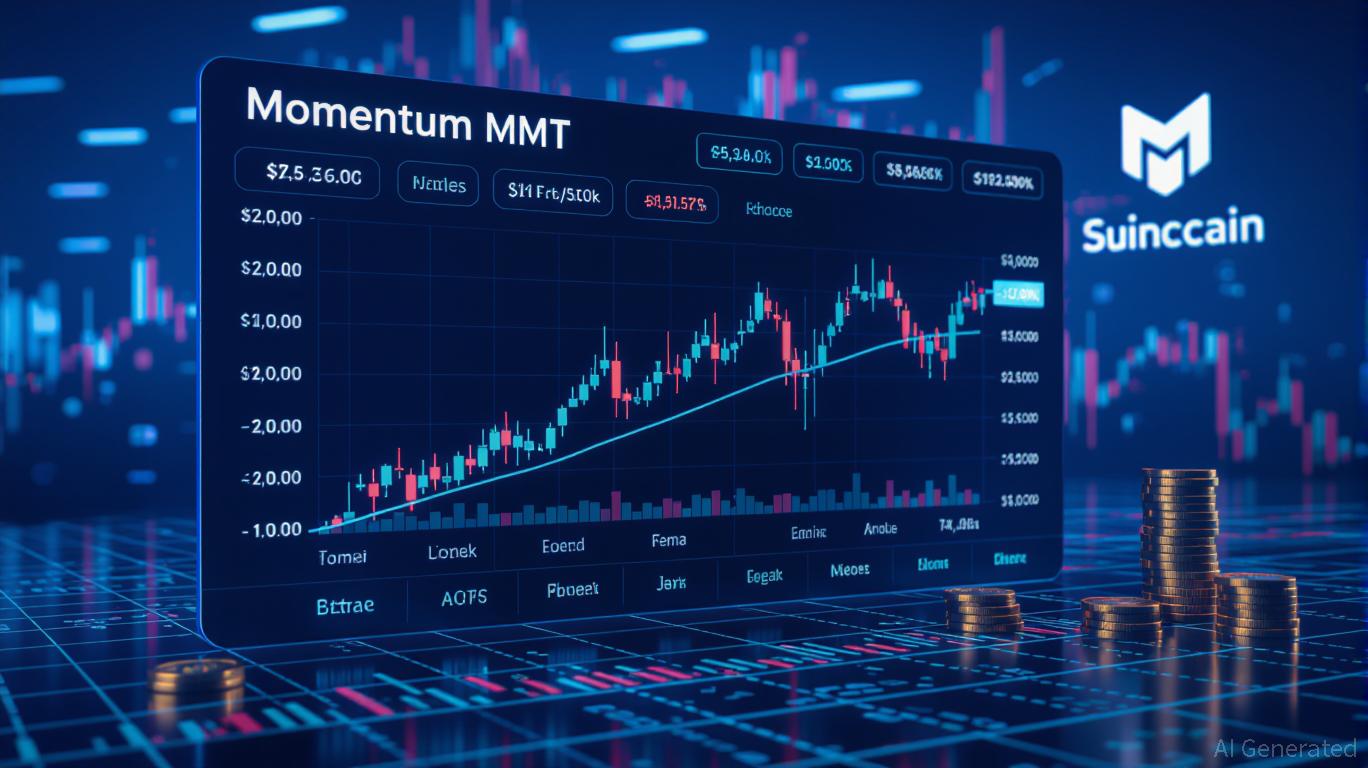Bitcoin Updates: Cango Utilizes Energy-Efficient Infrastructure to Connect Bitcoin Mining with the Future of AI Computing
- Cango Inc. transitions from auto platform to Bitcoin mining and AI HPC, leveraging global infrastructure and energy expertise. - Achieves 50 EH/s mining capacity in 8 months, with Q2 2025 revenue of $139.8M and $656M in Bitcoin holdings. - Acquires 50 MW Georgia facility to optimize energy costs and expand dual-purpose infrastructure for AI workloads. - Plans direct NYSE listing to enhance transparency amid regulatory scrutiny and industry shifts toward hybrid AI-mining models. - Aims to refresh 6 EH/s e
Chinese automotive transaction platform
Cango’s financial results for Q2 2025 highlighted the effectiveness of its new direction, reporting $139.8 million in revenue and $99.1 million in adjusted EBITDA. This growth was fueled by an asset-light approach that emphasized operational efficiency, as noted by

Cango’s board has authorized a direct listing on the New York Stock Exchange (NYSE), replacing its American Depositary Receipt (ADR) program, effective November 17, 2025. This change is intended to improve transparency and attract more institutional investors, especially after U.S. regulators examined its relationship with Bitmain, as mentioned in
With Bitcoin mining expenses rising to $114,842 per BTC in October 2025, competition has intensified, leading smaller players to consolidate or exit, as noted in
Cango’s plans for 2026 include upgrading 6 EH/s of mining hardware, expanding its energy infrastructure, and launching HPC pilot programs. With operations in the U.S., Oman, Ethiopia, and Paraguay, the company seeks to leverage its international reach and energy expertise to become a frontrunner in the next generation of computing.
Disclaimer: The content of this article solely reflects the author's opinion and does not represent the platform in any capacity. This article is not intended to serve as a reference for making investment decisions.
You may also like
Defying Market Swings: $NNZ's Tactical Approach to Crypto
- Bitget report highlights Noomez's $NNZ token as a 2025 bull run contender with 280x price potential via its 28-stage presale model. - Deflationary mechanics include token burns at key milestones, 15% locked liquidity, and double staking rewards for early adopters. - Community-driven features like "Noom Recruit" referral program and transparent Noom Gauge dashboard aim to build trust and adoption. - Analysts note $NNZ's structured approach addresses meme coin volatility while aligning with 2025 trends fav

Growing Institutional Focus on Momentum (MMT)
- Momentum (MMT) token surged 1330% post-Binance listing, driven by $10M funding and institutional backing from Coinbase , OKX, and Jump Crypto. - On-chain data shows $12B 30-day DEX volume and $265M TVL, but analysts warn of speculative risks amid 224% 24-hour volatility spikes. - Institutional capital shifts toward Bitcoin/ETH staking ($6.1B combined inflows) raise questions about MMT's long-term viability without proven real-world utility. - Upcoming ve(3,3) DEX and RWA integrations aim to enhance MMT's

AAVE -3.37% 7-Day Surge Despite Year-Long Downtrend as Market Integrates
- Aave's AAVE token fell 0.89% in 24 hours to $207.68 despite a 3.37% 7-day rally amid strategic integrations. - Aave Horizon's partnership with VanEck's VBILL tokenized Treasury fund enables institutional-grade collateral via Chainlink and Securitize infrastructure. - The integration creates arbitrage opportunities with 4.84%+ potential returns through VBILL collateralized RLUSD borrowing strategies. - Backtests show Aave outperformed BTC by +14.54% over 30 days post-announcement, with 67% positive excess
Kyo Achieves $1 Billion Valuation: Wagering on Cross-Chain DeFi Integration During Industry Upheaval
- Kyo Finance secures $5M Series A at $1B valuation, aiming to unify blockchain liquidity via cross-chain interoperability. - DeFi faces innovation vs. security tensions as projects like Mutuum advance infrastructure while crises like Stream Finance's $93M loss expose systemic risks. - Industry responds with risk mitigation tools (e.g., RedStone ratings) and modular infrastructure reforms to address contagion risks from interconnected lending markets. - Kyo's valuation reflects institutional confidence in